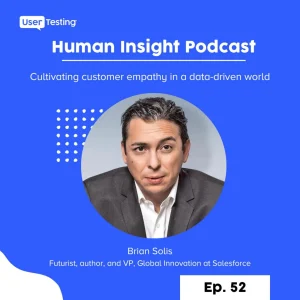
Your customers are not only becoming increasingly social, their digital lifestyle is fueled by mobile devices. Whether it’s a smart phone or a tablet, they are masters of the small screen experience and accomplished in the art of communicating with both their thumbs and their voice. The most riveting facet of the mobile revolution is not only what we’re witnessing, it’s what we’re missing in these important times of transformation.
These connected customers or Generation C as I refer to them are critical to your organization beyond their role of consumer. They are increasingly taking over the inside of your company as your everyday workforce. So in many ways, we are the very people we’re trying to reach. And, to do so takes standardization, transformation, and empowerment. This is the dawn of the mobile enterprise and as a result, digital strategists must think beyond the idea of a social business. Now’s the time to lay the foundation for an adaptive enterprise where mobile becomes one of the pivotal screens for employee and customer engagement, communication and collaboration. Without leadership and standardization however, employees will use their mobile devices as part of their work, but do so without regard or knowledge of best practices on what to do and what not to do and how it aligns with corporate policies and security.
Chris Silva, my colleague at Altimeter Group, just released a new report, “Power to the People: Identify and Empower Your Mobile Workforce A Three-Phase Strategy to Serve Mobile Workgroups.” It was written with the intention of helping businesses better understand the state of the mobilized workforce and how to increase productivity while empowering the connected employee.
As Silva noted in his post announcing the report, “My collaborator and editor Jeremiah Owyang and I began with a hypothesis that, as the age of mobile = email has come to a close, are mobile employees being served with the proper applications to make them be more productive? Our guess was that they weren’t, and largely, rollouts are just getting started but there are already some lessons to be learned. The most important is that different roles have different needs from mobility, and determining who is using mobile today, and what their needs are from mobile is the first step to a defensible mobility plan.”
As always, a successful mobile rollout examines employee and customer expectations, business goals, and long-term trends to develop a strategy that looks beyond Blackberries, iPhones and iPads and Droids. One of Silva’s observations hits the new mobile opportunity squarely between the eyes, “Within one large law firm that we spoke with, in the course of one year, the company went from 100% BlackBerry devices for mobile users to just 5% — the other 95% were all iPhones. As mobile application ecosystems continue to flourish, supporting mobile users is no longer about email.”
In his report, Silva lays out a three step process to choose the right tools and ultimately develop the construct of a mobile and adaptive enterprise…
1. Conduct a mobility audit
2. Examine Roles
3. Partner Choice

His research encourages those leading technology strategies to start with understanding the constituencies inside the organization. As executives, technical workers, and contractors have varying needs for mobile productivity, they do share the need to stay connected and productive wherever whenever.
Silva’s research identified three common internal roles around mobile engagement…
1. Information Worker: Need = consume
2. Field/Sales Worker: Need = collaborate
3. Executive/Technical Worker: Need = compute

Consume: Users inside of organizations are looking to access corporate information on the go. These information consumers are seeking information that is accessible and digestible on their device of choice.
Collaborate: Workers may be creating information in the field, such as notes, drawings, recordings, and photos, and need a path to access and store information on corporate data stores. Current tools in place, such as Microsoft SharePoint, rank poorly among these users and IT departments due to a lack of support for popular mobile platforms.
Compute: Heavy travelers and temporary workers (like contractors) are looking to tablet devices to be the only piece of tech they carry day-to-day. An emerging class of solutions aims to give these users access to the enterprise applications, the corporate desktop, or both from the tablet or even smartphone the user is toting.
Participating organizations were then asked to rank their mobile challenges. Collaboration associated with remote/field professionals ranked at the top of the list with 61% followed by those who need access to complex computing tasks at 27%.

To help businesses grasp the state of mobile chaos within the organization, Silva leaves decision makers with three actionable steps to assess, learn, and design an informed and scalable mobile enterprise…
1. Conduct an audit for level-set: Before embarking on user identification and role analysis, the initial and most critical step is to perform a level-set. The question to answer is what are the devices and who is using them?
2. Understand user needs by conducting detailed stakeholder interviews and human factors analysis: The analysis completed in step 1 will highlight favorite tools, but as Silva cautions, they may not be the ideal choices for the long term.
3. Choose the right solution by creating a weighted partner model: Inputs form the previous two steps will help identify the platforms that demand support, as well as the groups most in need of mobility.
With all of the talk about social media and the need to create an infrastructure to support a social enterprise, we cannot overlook the importance of mobilizing the workforce. Doing so enables employees to more effectively collaborate with team members within to improve collaboration with customers externally.





Generation C! I love it
Me too! 😉
Great useful and informative post, i got some idea from your post. Thanks a lot for sharing these awesome post with.
Great recap, Brian. Now I’ll have to carve out an hour to watch the presentation!
Definitely worth your time. You can also read the report here: https://www.slideshare.net/secret/E5F38n7Vl5ZuVr
Yeah. SMS and mobile marketing is fast becoming a trend. Thanks for sharing your insights.
The analysis completed in step 1 will highlight favorite tools, but as
Silva cautions, they may not be the ideal choices for the long term.
The question to answer is what are the devices and who is using them?
Great recap, Brian. Now I’ll have to carve out an hour to watch the presentation!
It’s what we’re missing in these important times of transformation.
It was written with the intention of helping businesses better
understand the state of the mobilized workforce and how to increase
productivity while empowering the connected employee.
The most riveting facet of the mobile revolution is not only what we’re
witnessing, it’s what we’re missing in these important times of
transformation.
The most riveting facet of the mobile revolution is not only what we’re
witnessing, it’s what we’re missing in these important times of
transformation.